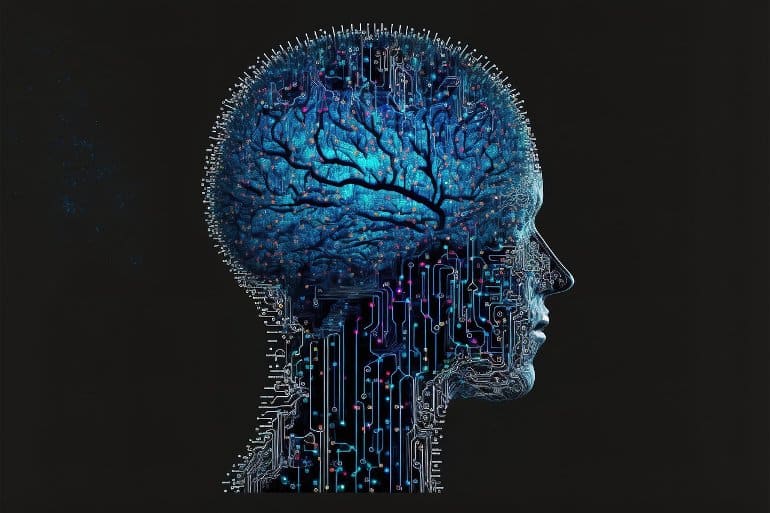Summary: Children with conduct disorders who were exposed to maltreatment showed far more extensive changes in brain structure compared to children with conduct disorders who were not mistreated.
Source: Elsevier
Characterized by antisocial behaviors and low academic achievement, conduct disorder (CD) impacts an estimated 9.5% of individuals in the United States.
Childhood maltreatment is a major risk factor for CD. Past CD studies have identified structural alterations in various brain regions, such as those implicated in emotion processing, learning, and social cognition.
A new study appearing in Biological Psychiatry: Cognitive Neuroscience and Neuroimaging, has now assessed whether youths with CD who experienced childhood maltreatment differ at the brain level from those with CD without a history of maltreatment.
The research, led by Marlene Staginnus, a Ph.D. student at the University of Bath, UK, tested the ecophenotype model, which proposes that maltreatment-related psychopathology is distinct from forms of psychopathology that do not develop as a result of childhood maltreatment. The study included 146 healthy controls and 114 youths with CD. The researchers collected structural MRI data to study cortical structure, including the volume, area, and thickness of the cortex, the outer layer of the brain.
Graeme Fairchild, Ph.D., Department of Psychology, University of Bath, Bath, UK, the senior author on the paper, said, “Our findings have important implications for theory, research, and clinical practice for those working in mental health or forensic services for young people.”
“First, they suggest that, despite having the same diagnosis, conduct disordered youths with and without maltreatment differ from each other in brain structure and also differ from healthy youth in different ways.
“To be more specific, the conduct disordered youth with a history of childhood maltreatment showed far more extensive changes in brain structure than the non-maltreated youth with CD—multiple brain regions were affected, and several different aspects of cortical structure (cortical thickness, surface area, and folding) were altered.
“The maltreated youth with CD also differed more in comparison to the healthy youth than their non-maltreated counterparts.”
In line with the researchers’ hypotheses, maltreated and non-maltreated CD youths displayed distinct alterations compared to healthy controls. When combining the CD youths with and without maltreatment into a single group, the CD group displayed lower cortical thickness in the right inferior frontal gyrus.
However, when the maltreated and non-maltreated youths were separately compared with healthy controls, those who had experienced maltreatment displayed more widespread structural changes in comparison to healthy controls that did their non-maltreated counterparts.

Cameron Carter, MD, editor of Biological Psychiatry: Cognitive Neuroscience and Neuroimaging, said of the study, “the authors use structural MRI to measure the changes in brain structure associated with CD and highlight the unique contribution of childhood maltreatment to these changes. The study provides neurobiological insights into the heterogeneity of CD with implications for understanding pathophysiology and informing future treatment development.”
These findings may help guide research toward better understanding the prevention, assessment, and treatment of CD. They also beckon to researchers to explore whether there is a distinct pathway between maltreatment and antisocial behavior, or if such brain differences translate to differences in treatment responsiveness.
Dr. Fairchild recommends that “maltreatment history be assessed in future neuroimaging studies of conduct disorder and other psychiatric disorders of childhood and adolescence.”
About this neurodevelopment and mental health research news
Author: Press Office
Source: Elsevier
Contact: Press Office – Elsevier
Image: The image is in the public domain
Original Research: Open access.
“Testing the Ecophenotype Model: Cortical Structure Alterations in Conduct Disorder With Versus Without Childhood Maltreatment” by Marlene Staginnus et al. Biological Psychiatry: Cognitive Neuroscience and Neuroimaging
Abstract
Testing the Ecophenotype Model: Cortical Structure Alterations in Conduct Disorder With Versus Without Childhood Maltreatment
BACKGROUND
Childhood maltreatment is common in youths with Conduct Disorder (CD) and both CD and maltreatment have been linked to neuroanatomical alterations. Nonetheless, our understanding of the contribution of maltreatment to the neuroanatomical alterations observed in CD remains limited. We tested the applicability of the ‘ecophenotype’ model to CD, which holds that maltreatment-related psychopathology is (neurobiologically) distinct from psychopathology without maltreatment.
METHODS
Surface-based morphometry was used to investigate cortical volume, thickness, surface area and gyrification in a mixed-sex sample of CD participants (n=114) and healthy controls (n=146), aged 9–18 years. Using vertex-wise general linear models adjusted for sex, age, total intracranial volume, and site, controls were compared with the overall CD group, and the CD subgroups with (n=49) versus without (n=65) maltreatment (assessed by the Children’s Bad Experiences interview). These subgroups were also directly compared.
RESULTS
The overall CD group showed lower cortical thickness in the right inferior frontal gyrus. Maltreated CD youths showed more widespread structural alterations relative to controls, comprising lower thickness, volume and gyrification in inferior and middle frontal regions. Conversely, non-maltreated CD youths only showed greater left superior temporal gyrus folding relative to controls. When contrasting the CD subgroups, those with maltreatment displayed lower right superior temporal gyrus volume, right precentral gyrus surface area, and gyrification in frontal, temporal, and parietal regions.
CONCLUSIONS
Consistent with the ‘ecophenotype’ model, findings indicated that CD youths with versus without maltreatment differ neurobiologically. This highlights the importance of considering maltreatment history in neuroimaging studies of CD and other disorders.






